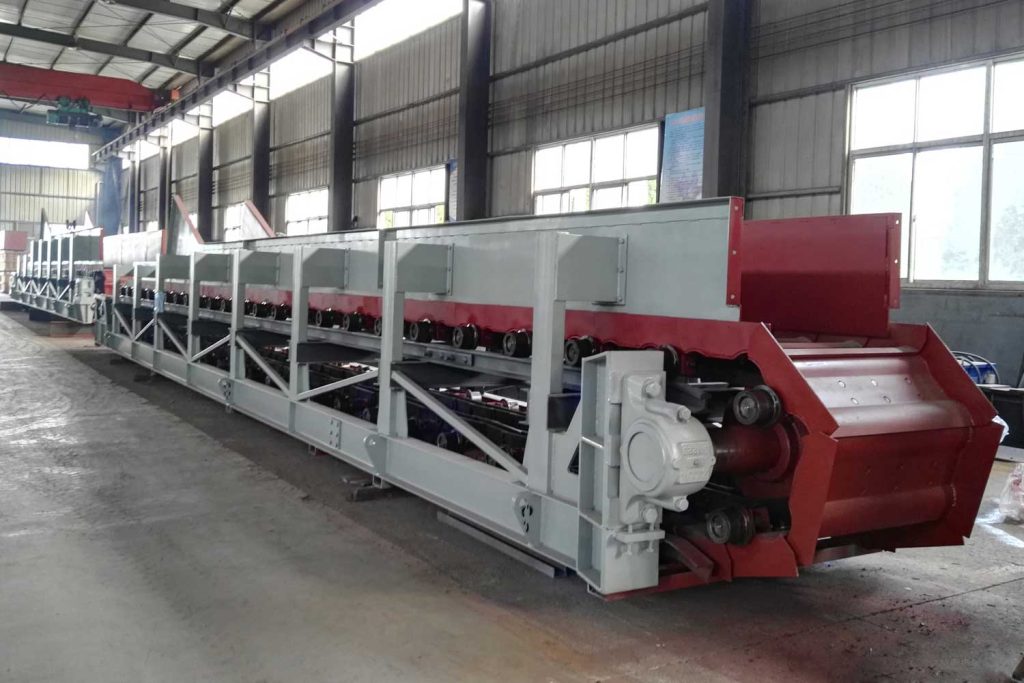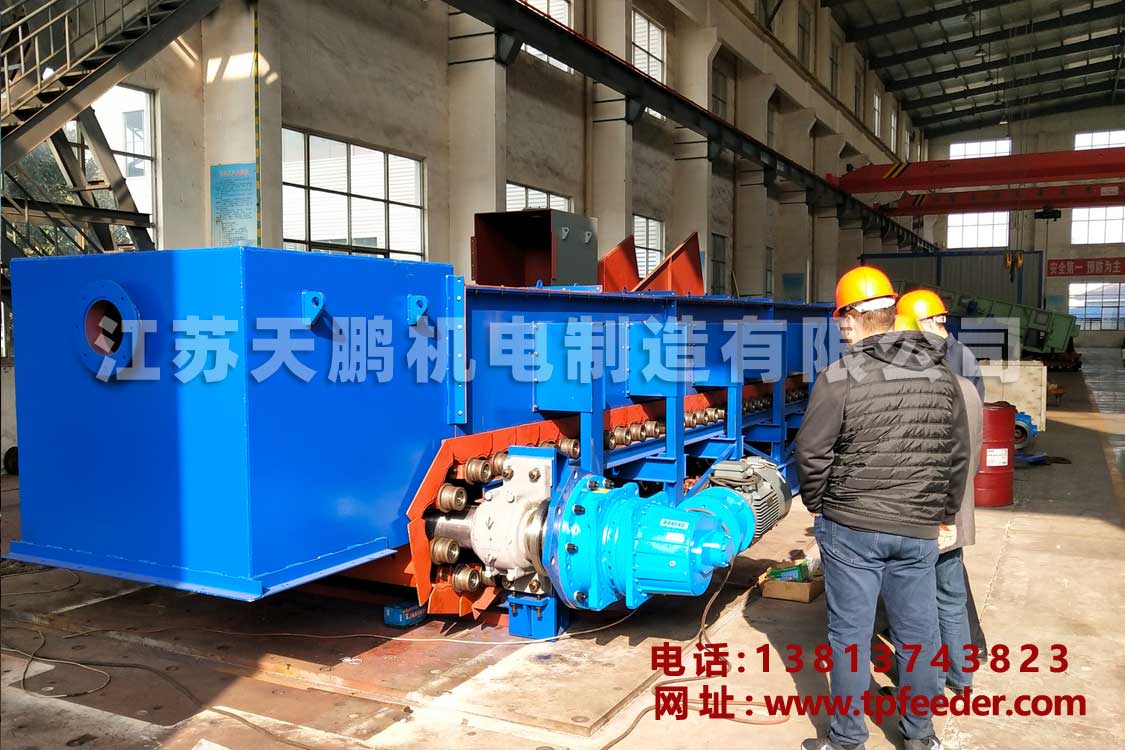A belt conveyor and an apron feeder are both types of material handling equipment used to move bulk materials, but they differ in design, operation, and application.
Belt conveyor
A belt conveyor uses a continuous belt with cleats or bars that run along the surface of the belt to transport materials. The belt is driven by a motor, and the conveyor structure is designed to support the weight of the belt and the materials being transported. Belt conveyors can be used to move materials horizontally or vertically and can range in size and capacity from small units used in manufacturing to large conveyors used in mining operations.
Apron feeder
An apron feeder consists of a series of overlapping steel plates or pans that are attached to metal chains and driven by a motor to move heavy or abrasive materials along a predetermined path. Apron feeders are commonly used in mining, quarrying, and heavy industrial applications to move large volumes of slow-moving materials such as coal, ore, and slag. The primary function of an apron feeder is to extract or feed materials from a storage unit or bin, similar to a belt feeder.
The key differences between belt conveyors and apron feeders
The key differences between belt conveyors and apron feeders lie in their design and application. Belt conveyors are designed to transport materials efficiently over long distances or between different levels. They are commonly used in manufacturing, warehousing, and transportation industries. Apron feeders, on the other hand, are designed to handle heavy, slow-moving materials in mining and industrial environments, and they are primarily used for material extraction and feeding.
Belt conveyor and apron feeder in cement plant

In a cement plant, both belt conveyors and apron feeders are commonly used as material handling equipment, but they serve different purposes and are used in different parts of the process.
- Belt conveyors are used in cement plants to transport materials such as limestone, gypsum, and other raw materials from the quarry or mine to the processing plant, or from the processing plant to storage or shipping facilities. Belt conveyors are also commonly used to transport finished products such as cement, fly ash, and other materials to storage or shipping facilities. In addition to their use in transportation, belt conveyors are also used for blending, homogenizing, and converting materials during the cement manufacturing process.
- Apron feeders are typically used in cement plants to extract and transport heavy or abrasive materials, such as coal, clinker, or slag, from storage units or bins to the process equipment, such as crushers, mills, or kilns. Apron feeders are well suited for this application due to their ability to handle large volumes of material at a controlled rate, even when dealing with large pieces of rock or other bulky materials.
The belt conveyor and an apron feeder are both material handling equipment used to move bulk materials, but they differ in their design, function, and application. Belt conveyors are used for efficient transportation over long distances, while apron feeders are used for material extraction and feeding in mining and heavy industrial applications.
